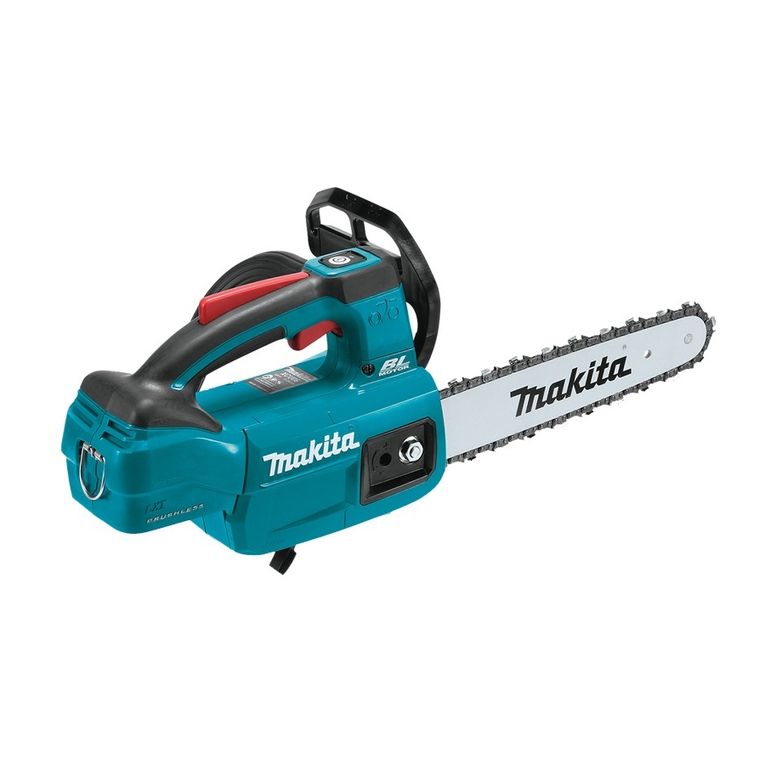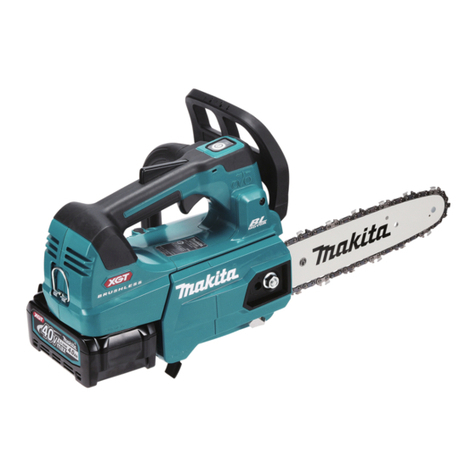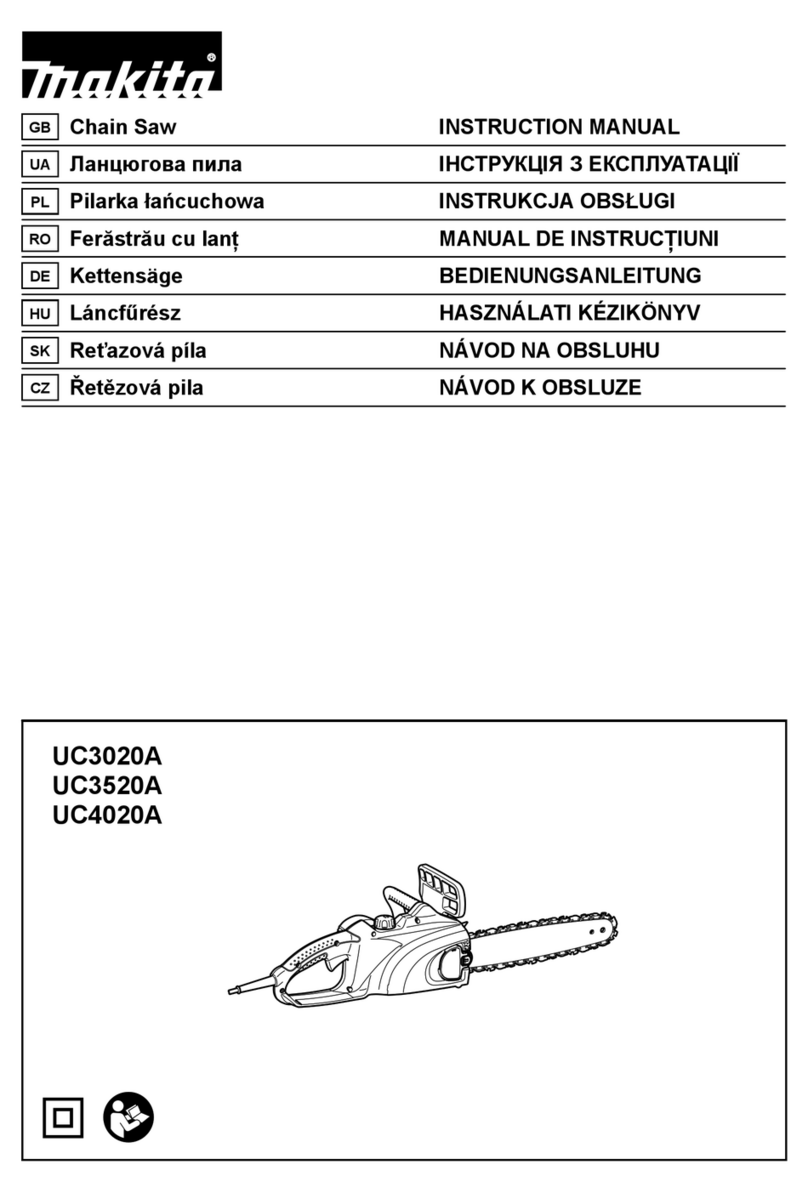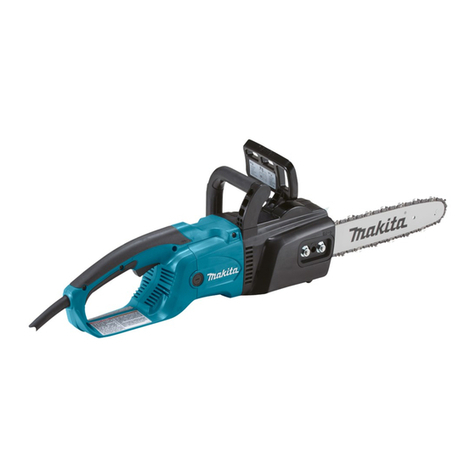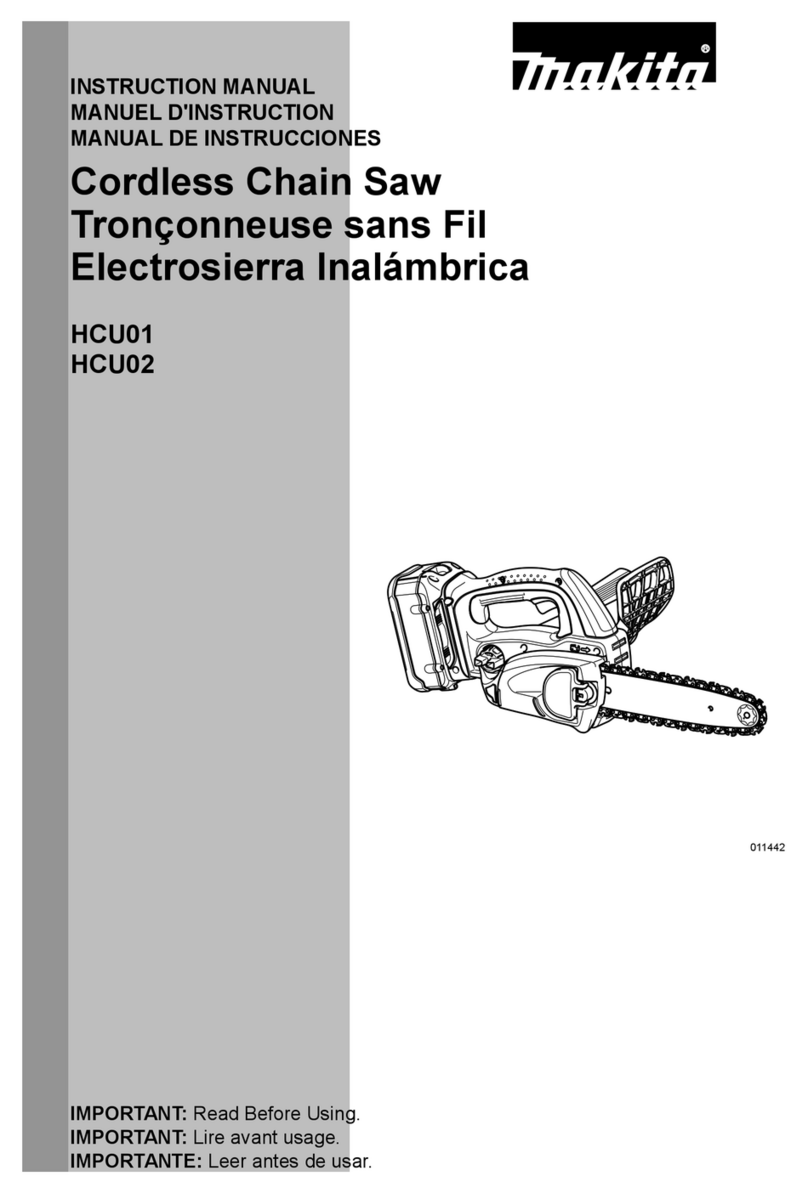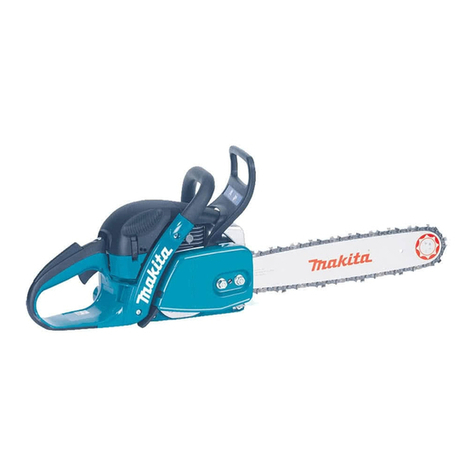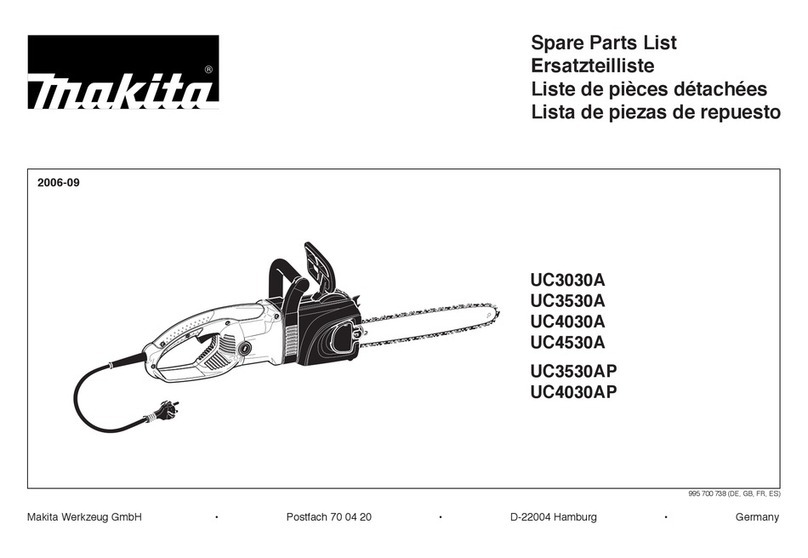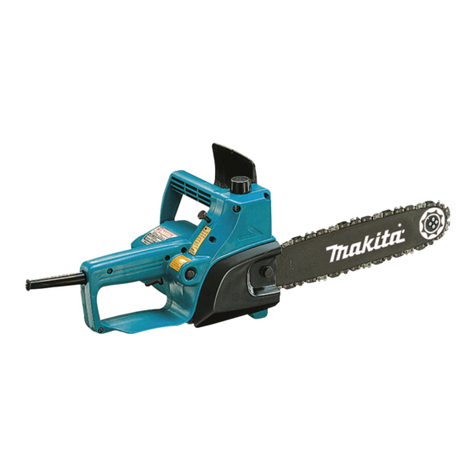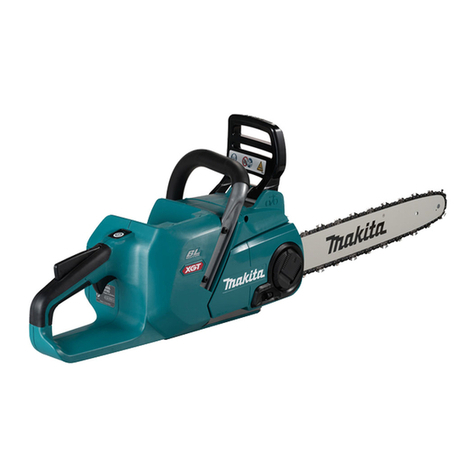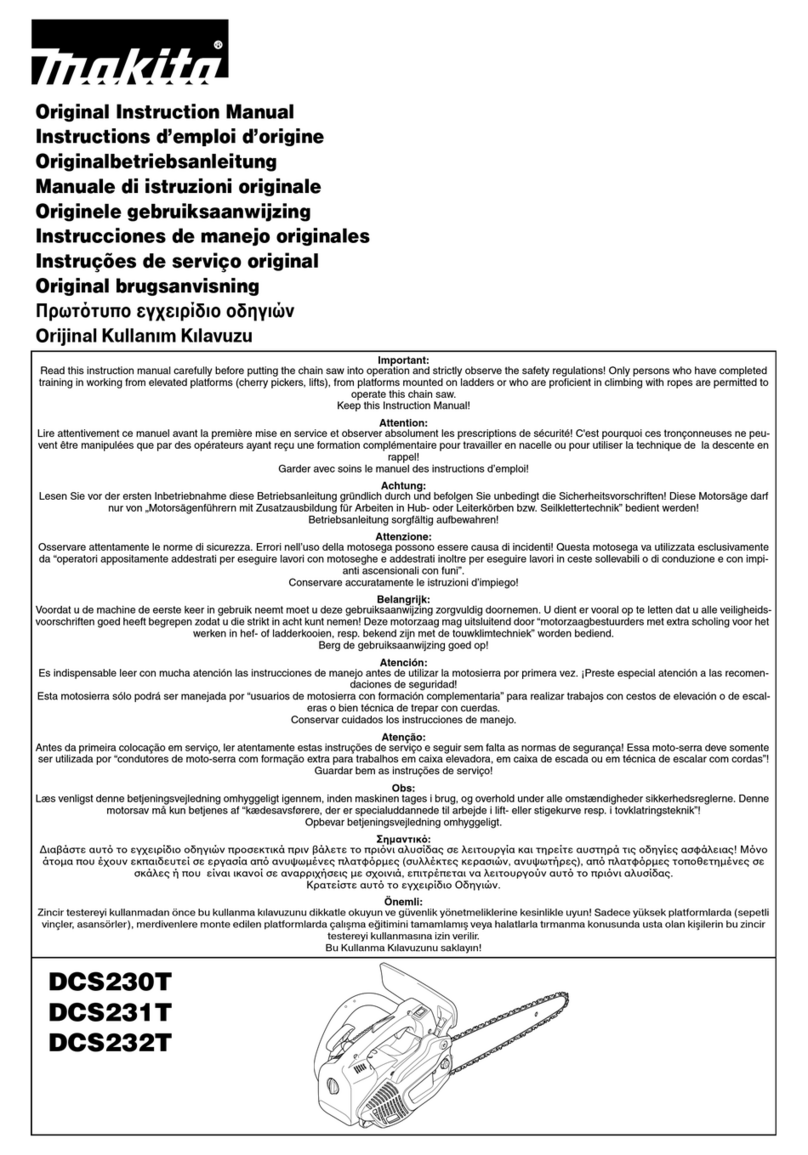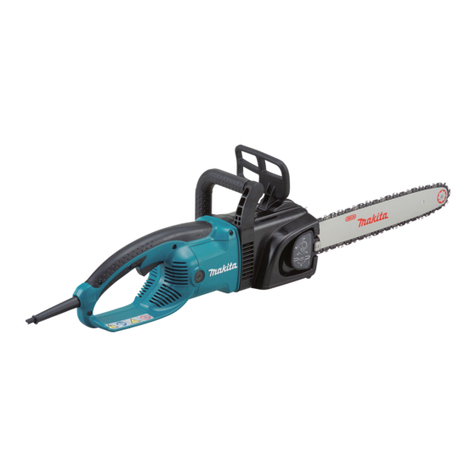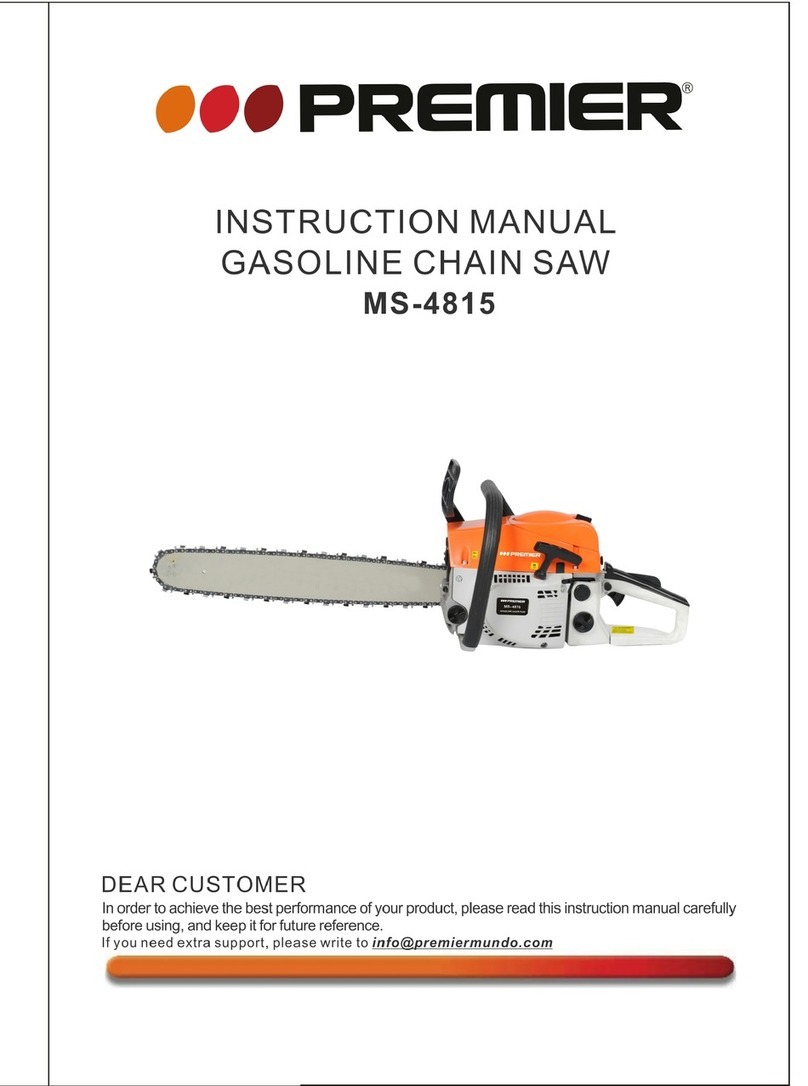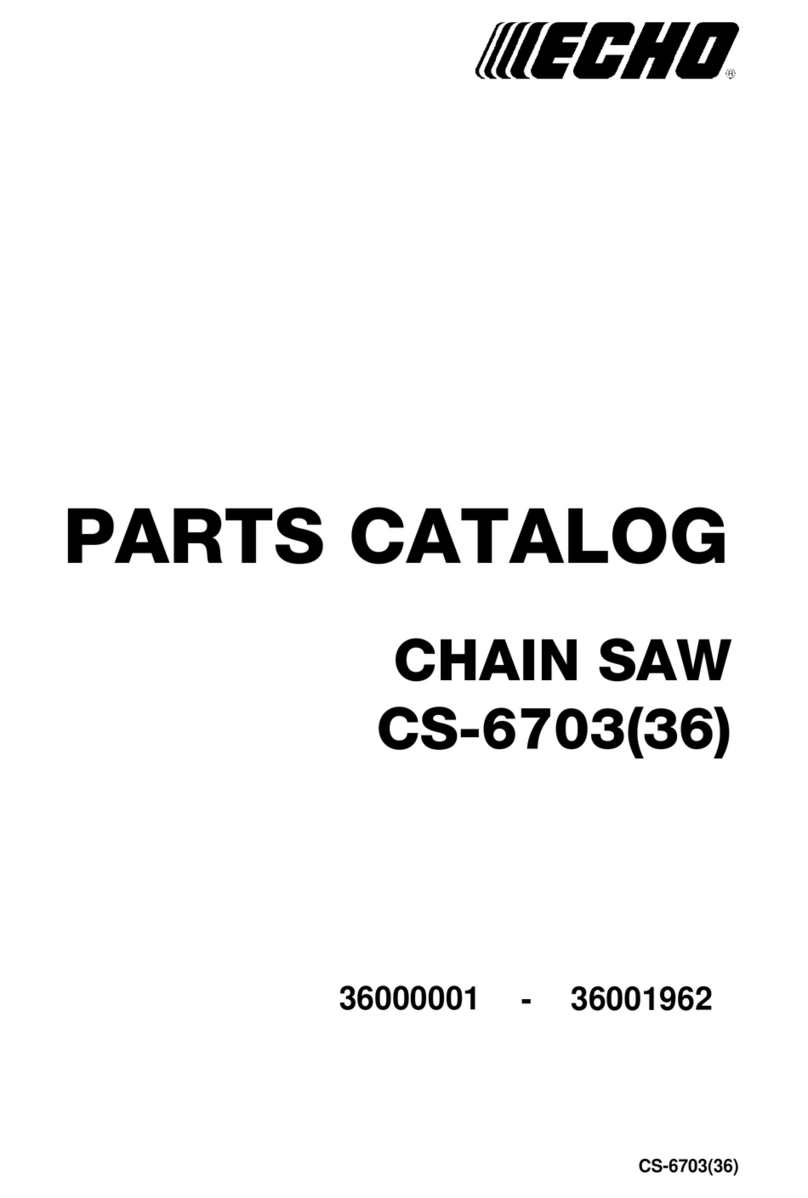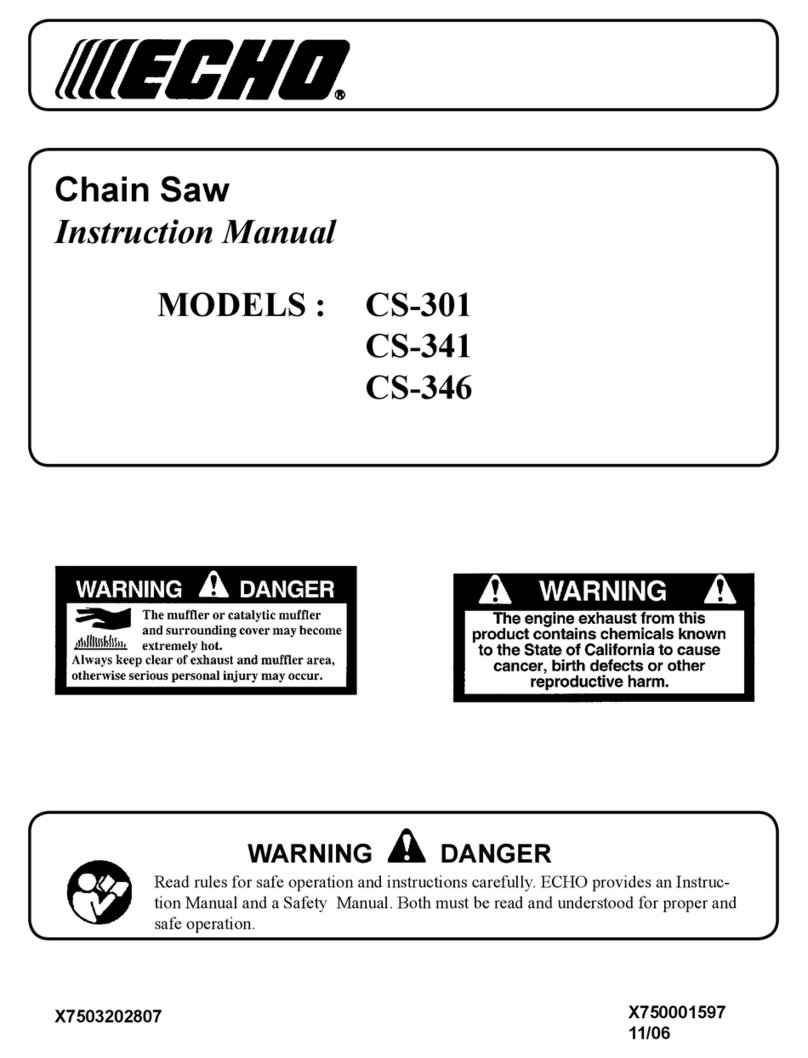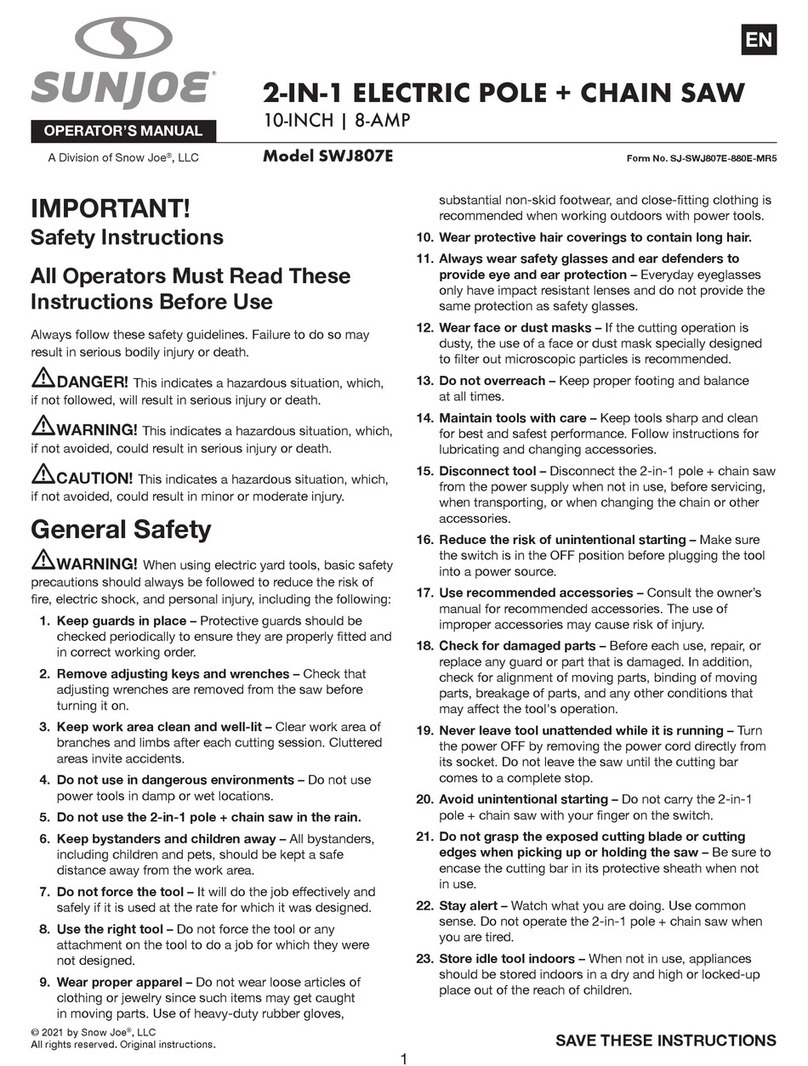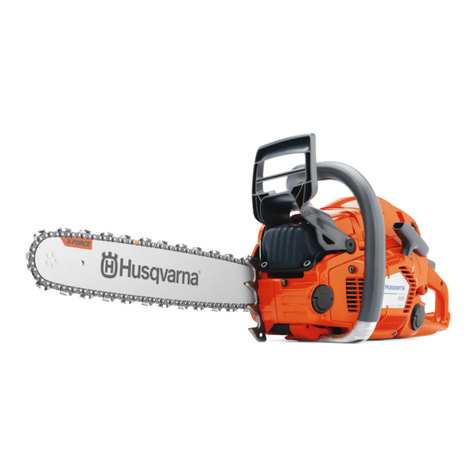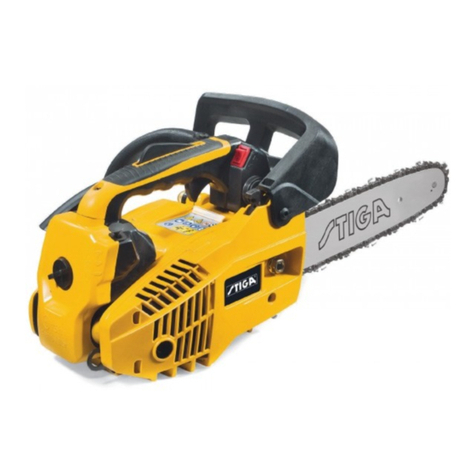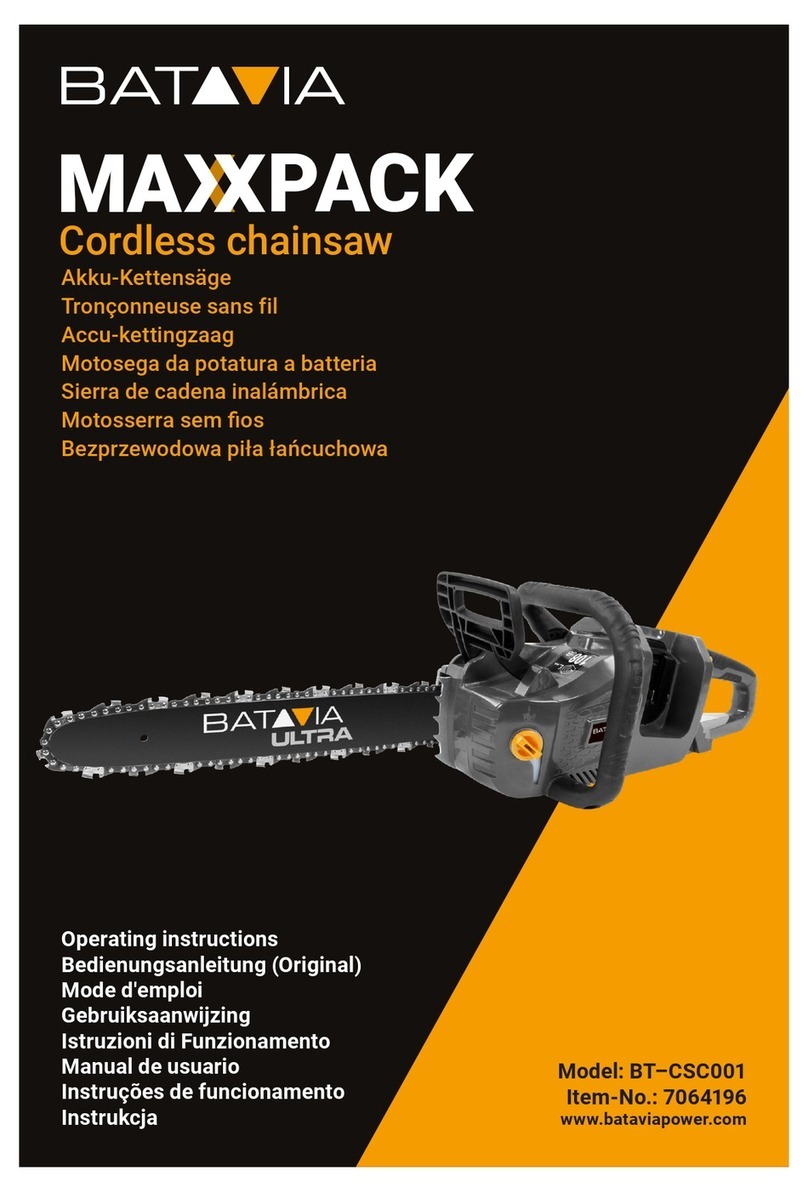
2
Thank you for purchasing a MAKITA product!
Congratulations on choosing a MAKITA chain saw! We are
conÞdent that you will be satisÞed with this modern piece of
equipment. The EA6100P, EA6101P are very handy and robust
chain saws with a new Design.
The automatic chain lubrication with variable-ßow oil pump
and maintenance-free electronic ignition ensure trouble-free
operation, while the hand-saving anti-vibration system and
ergonomic grips and controls make work easier, safer, and
less tiring for the user.
The Featherlight-Start system lets you start the saw effortlessly
with a spring-loaded starting assist.
MAKITA chain saw EA6100P, EA6101P are equipped with the
latest safety features and meet all national and international
standards.Thesefeatures include: handguards on bothhandles,
grip throttle lever lock, chain catch, safety saw chain, and chain
brake. The chain brake can be actuated manually, and is also
inertia-actuated automatically in case of kickback.
The following intellectual property rights and associated
other rights are applied in this equipment: DE 20301181,
DE20301182, US 7028658, US 7287505, DE 202008015755,
US 20100126455, DE 20314982, US 7191751 DE 10132973,
US 6648161, DE 202010016017, US 20120132180, DE
2007034181, US 7543554, DE 10191359, US 7033149,
DE 102006056924, US 7556020, DE 202008006013, DE
202012101134, DE 202009011430, US 20110048359.
In order to ensure the proper functioning and performance
of your new chain saw, and to safeguard your own per-
sonal safety, it is imperative that you read this instruction
manual thoroughly before operation. Be especially careful
to observe all safety precautions! Failure to observe these
precautions can lead to severe injury or death!
Table of contents Page
Delivery inventory ..............................................................3
Symbols ...............................................................................3
SAFETY PRECAUTIONS
General precautions ....................................................... 4
Protective equipment ......................................................4
Fuels / Refuelling ............................................................5
Putting into operation ......................................................5
Kickback .........................................................................6
Working behavior/Method of working ...........................6-7
Transport and storage .....................................................8
Maintenance ...................................................................8
First aid ...........................................................................8
Technical data .....................................................................9
Packing ................................................................................9
Denomination of components .........................................10
PUTTING INTO OPERATION
Mounting the guide bar and saw chain .................... 11-12
Tightening the saw chain ..............................................12
Checking the chain tension ........................................... 13
Retightening the saw chain ........................................... 13
Chain brake .................................................................. 13
Fuels ........................................................................14-15
Refuelling ......................................................................15
Checking the chain lubrication ......................................16
Adjusting the chain lubrication ......................................16
Starting the engine ........................................................ 17
Cold start ......................................................................17
Warm start ....................................................................17
Stopping the engine ......................................................17
Checking the chain brake .............................................18
Working in winter .............................................................18
Handle heating .............................................................. 18
Adjusting the carburetor ..................................................19
MAINTENANCE
Sharpening the saw chain .......................................20-21
Cleaning the inside of the sprocket guard .................... 22
Cleaning the guide bar .................................................. 22
Replacing the saw chain ...............................................23
Cleaning the air Þlter .....................................................24
Replacing the spark plug ..............................................25
Checking the ignition spark ........................................... 25
Checking the mufßer screws ......................................... 25
Replacing the starter cable/Replacing the return spring
cassette/Replacing the Featherlight -Start spring ....26-27
Mounting the fan housing ............................................. 27
Cleaning the air Þlter compartment/fan compartment ...28
Cleaning the cylinder Þns ..............................................28
Replacing the suction head .......................................... 28
Instructions for periodic maintenance ...........................29
Service, spare parts and guarantee ................................ 30
Trouble shooting .............................................................. 31
Extract from spare parts list .......................................32-33
Accessories .............................................................32-33
EU conformity declaration ............................................... 34



